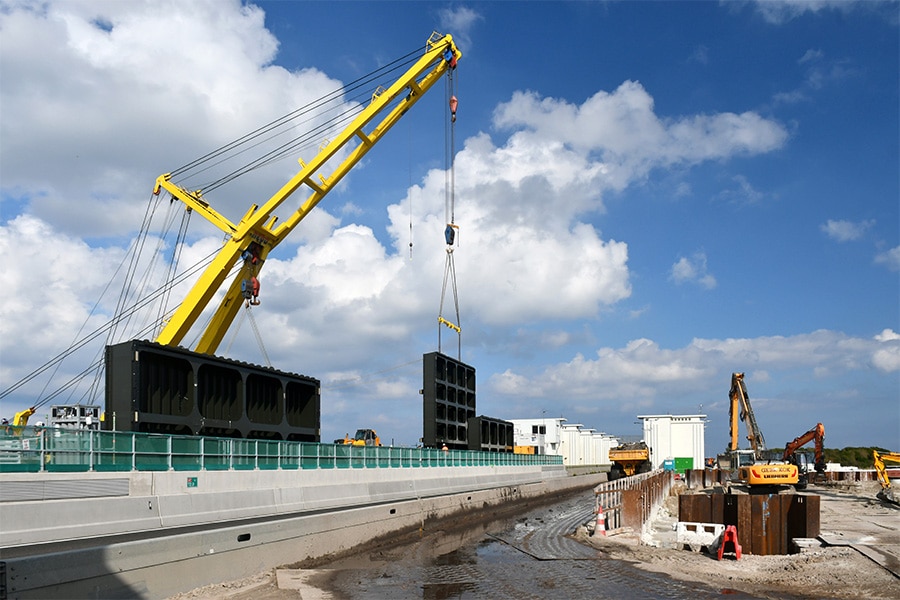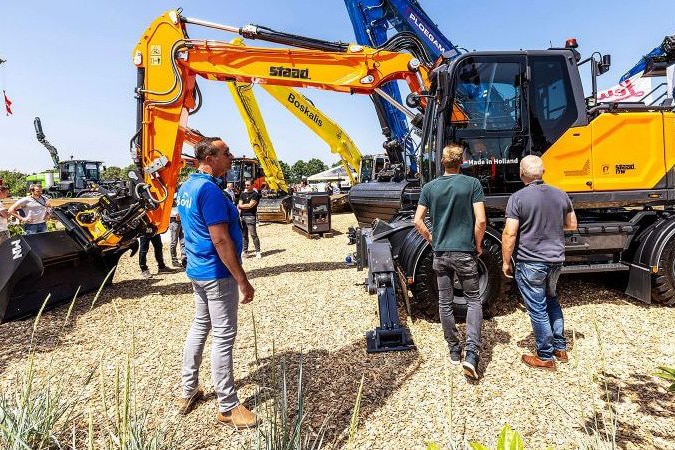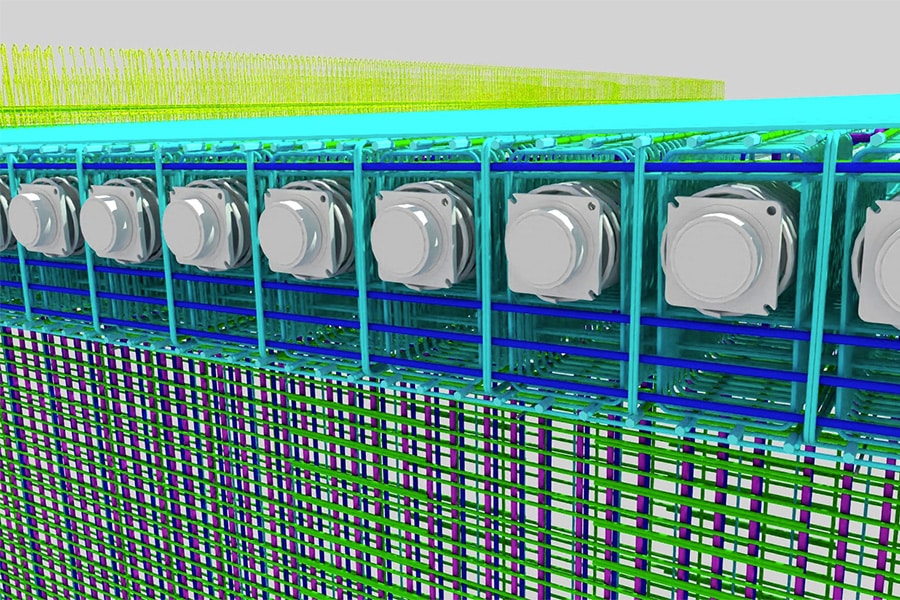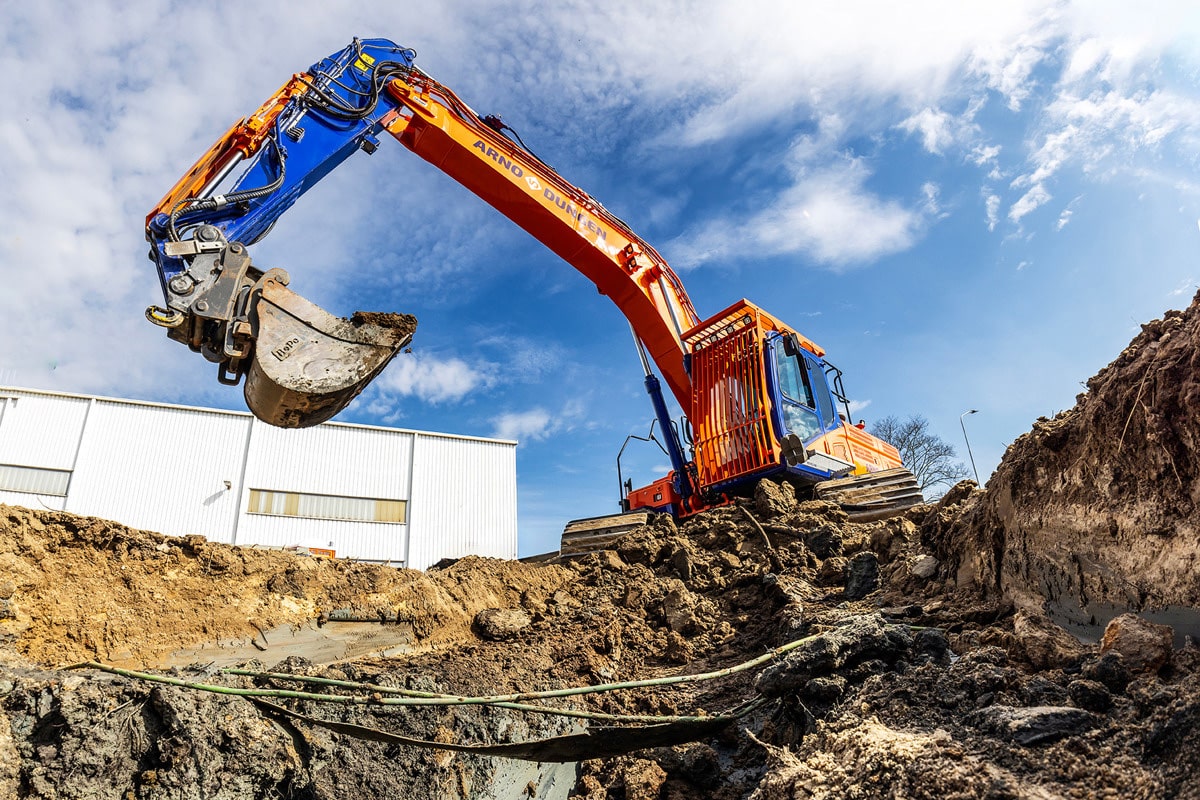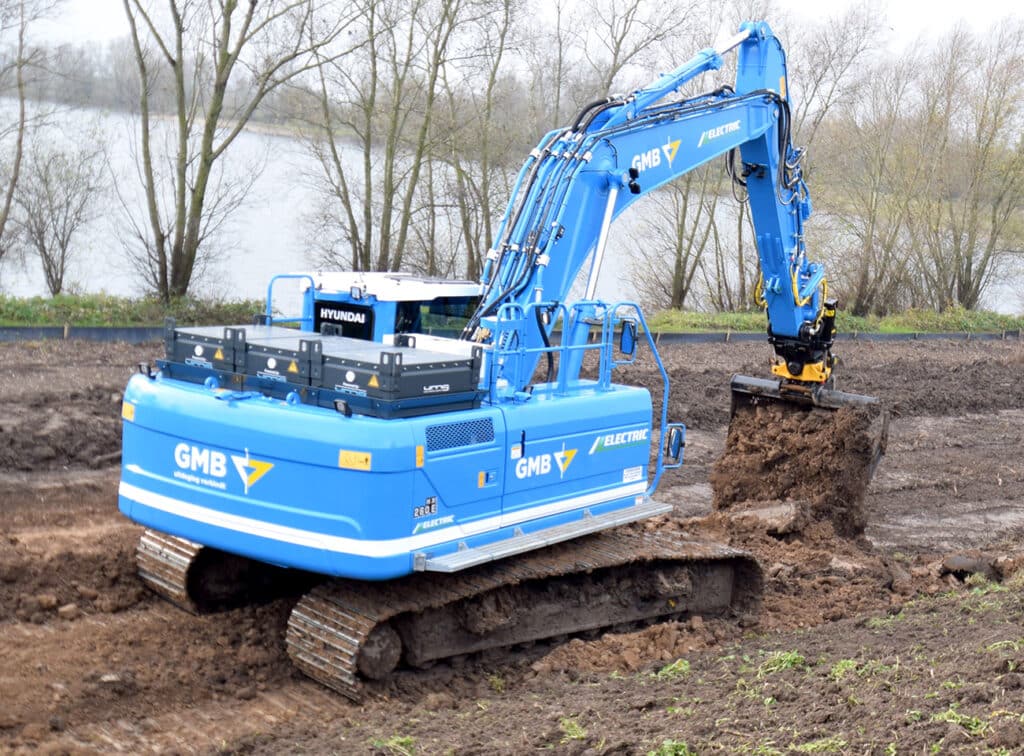
GMB deploys electric Hyundai built by UMS and Van der Spek
No emissions as a mission
Since late last year, GMB has been deploying an electrically powered Hyundai HX260AL excavator, which has come about in close cooperation between customer, importer Van der Spek and clean-tech engineering firm Urban Mobility Systems (UMS). The electrification fits perfectly into GMB's sustainability strategy towards the emission-free construction site in 2030.
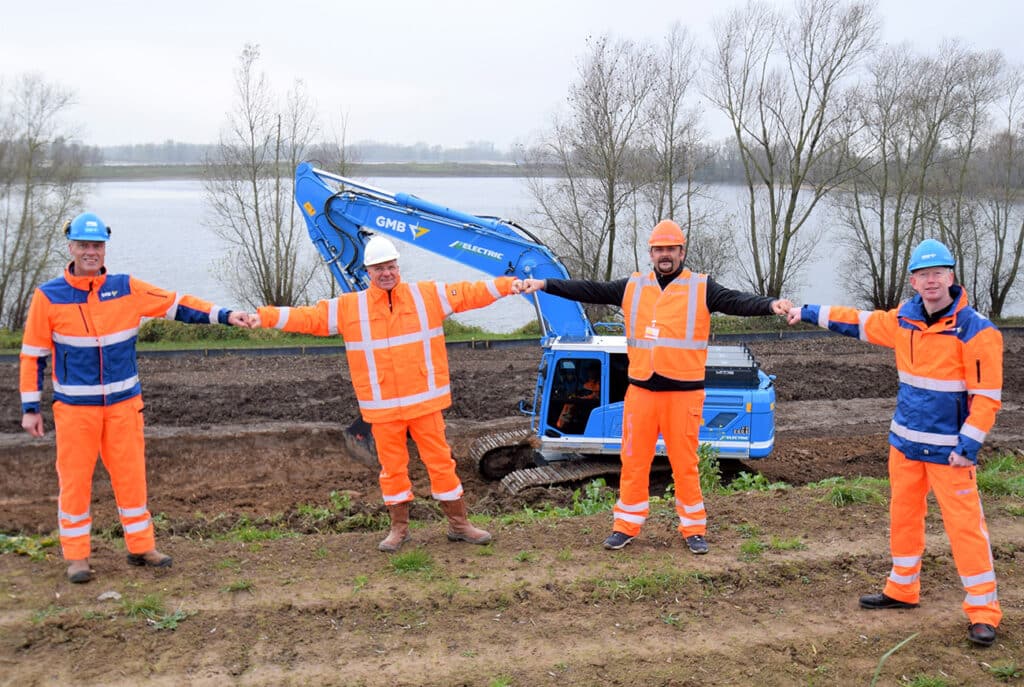
Family business GMB wants to be at the forefront in this field and is explicitly looking for cooperation when it comes to promoting emission-free and circularity in tenders. Previously, the company took delivery of an electric Hyundai mini excavator through Van der Spek, but in order to reduce harmful emissions, it had to think bigger. "By pioneering we hope to accelerate the development of emission-free machines, so that other companies in the industry can soon catch on and really make big steps towards zero emission," says Gerard van der Veer, head of equipment management at GMB.
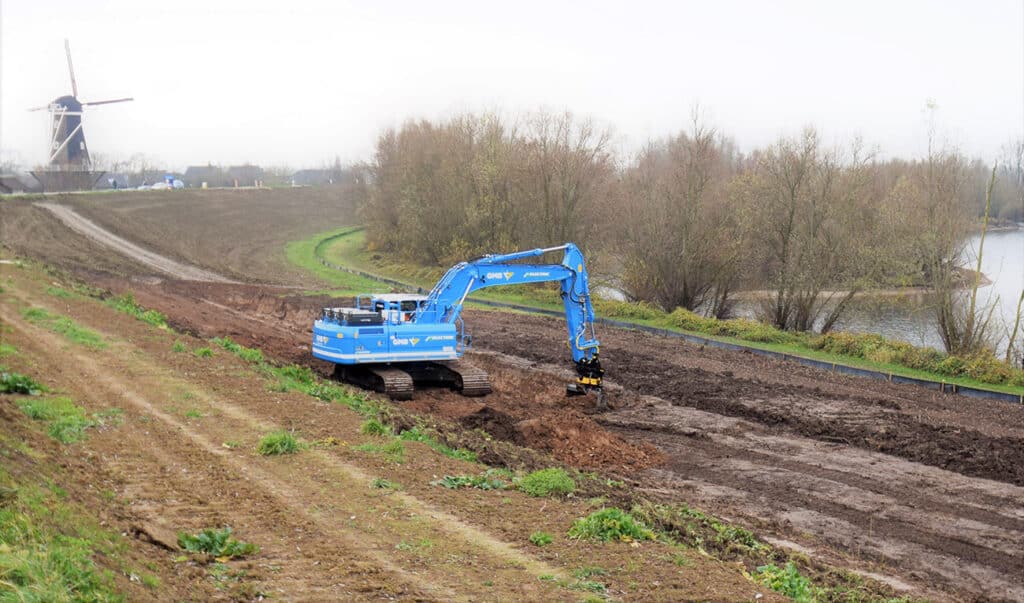
Interchangeable batteries
The company is deploying the Hyundai HX260 Electric directly on the dike reinforcement project along the Waal River between Gorinchem and Waardenburg. This work, over a distance of 23 km, is right next to Natura 2000 areas, and so the deployment of low- or zero-emission equipment is an express wish. The 28-ton crawler excavator was equipped by UMS from Oss with an electric powertrain and an interchangeable battery pack with three LFP batteries. A total of 390 kWh of capacity is thus available, enough to run an entire working day. Meanwhile, at a nearby yard, an additional battery pack is being charged. GMB deploys a truck with a truck-mounted crane to exchange the batteries. This takes about fifteen to twenty minutes.
Meanwhile, the machine has had the necessary hours of operation and GMB is very pleased with the first experiences. "We want to be able to work for a day on a full load, and in the beginning we were only able to do that to a limited extent," Van der Veer says. "Due to the low temperatures at the time, we naturally lost the necessary capacity. Moreover, the steering requires some fine-tuning at the beginning and a lot is asked of the crane here because of the heavy clay." The Hyundai is therefore equipped with a Verachtert chain bucket combined with an Engcon slewing tilt and 3D-GPS with automatic from Trimble.
Quarter of diesel costs
With this deployment profile, the electric excavator consumes 65 kWh of electricity per hour compared to 20 l/hour with a diesel engine. Consumption costs are thus three-quarters lower, but GMB's main concern is that the machine is much cleaner and quieter. The fact that the purchase price is almost three times as high does not bother the company at all. Van der Veer: "That is a one-time investment. Many hourly costs remain the same. The operator is just as expensive, as are the turntable and the GPS. When you consider that the equipment component is often only 10 to 15% of the total project cost, the price to do this project emission-free is 4 to 6% higher." Rising fuel and raw material prices are only making this difference smaller.
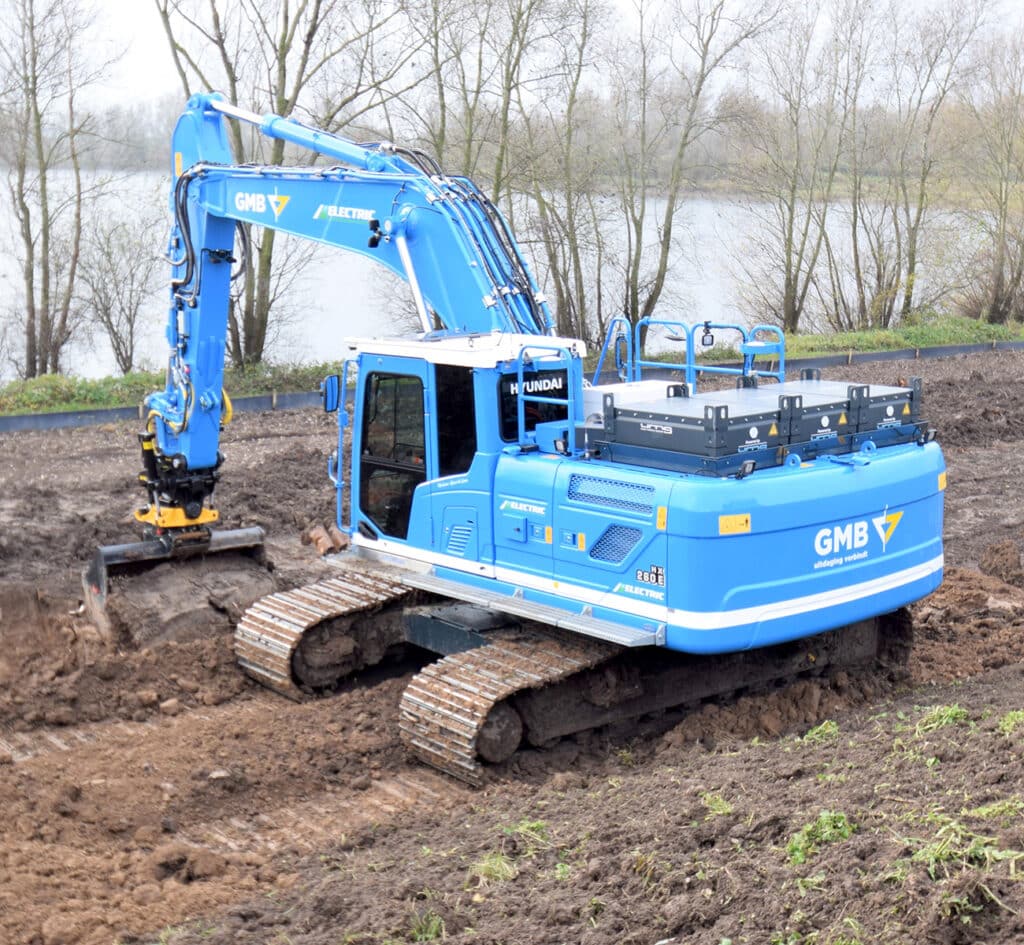
Since operator Gerrit-Jan van de Pol is very enthusiastic about the quietness in the cabin and the ease of operation of the HX260 Electric, GMB immediately ordered a second one. Importer Van der Spek also notices an increasing interest in electric machines. "Hyundai Europe has fully supported this initiative, for example by making all CANbus data available," director Jan Nolles knows. "The idea was first to deliver a hydrogen-powered excavator, but that development is going too slowly. So we ended up with UMS, and in retrospect I think this is the better path. The first HX85 Electric is also on the way and we are thinking of electrifying the HW140A tire crane."
Successful collaboration
"Our mission is not emissions," UMS director Lars Kool states bluntly. "I would like to be a put down legacy and aim to supply electric powertrains directly to machine builders as an OEM partner. That is still in the future, but GMB did buy this Hyundai with full factory warranty. Only by working together successfully can we accelerate the energy transition. This project is a good example of that, because it involved cooperation between people from the field and engineers from UMS with knowledge of electrification of construction machinery. The people at GMB and Van der Spek are real doers. Through that cross-pollination you get something that works in practice."
